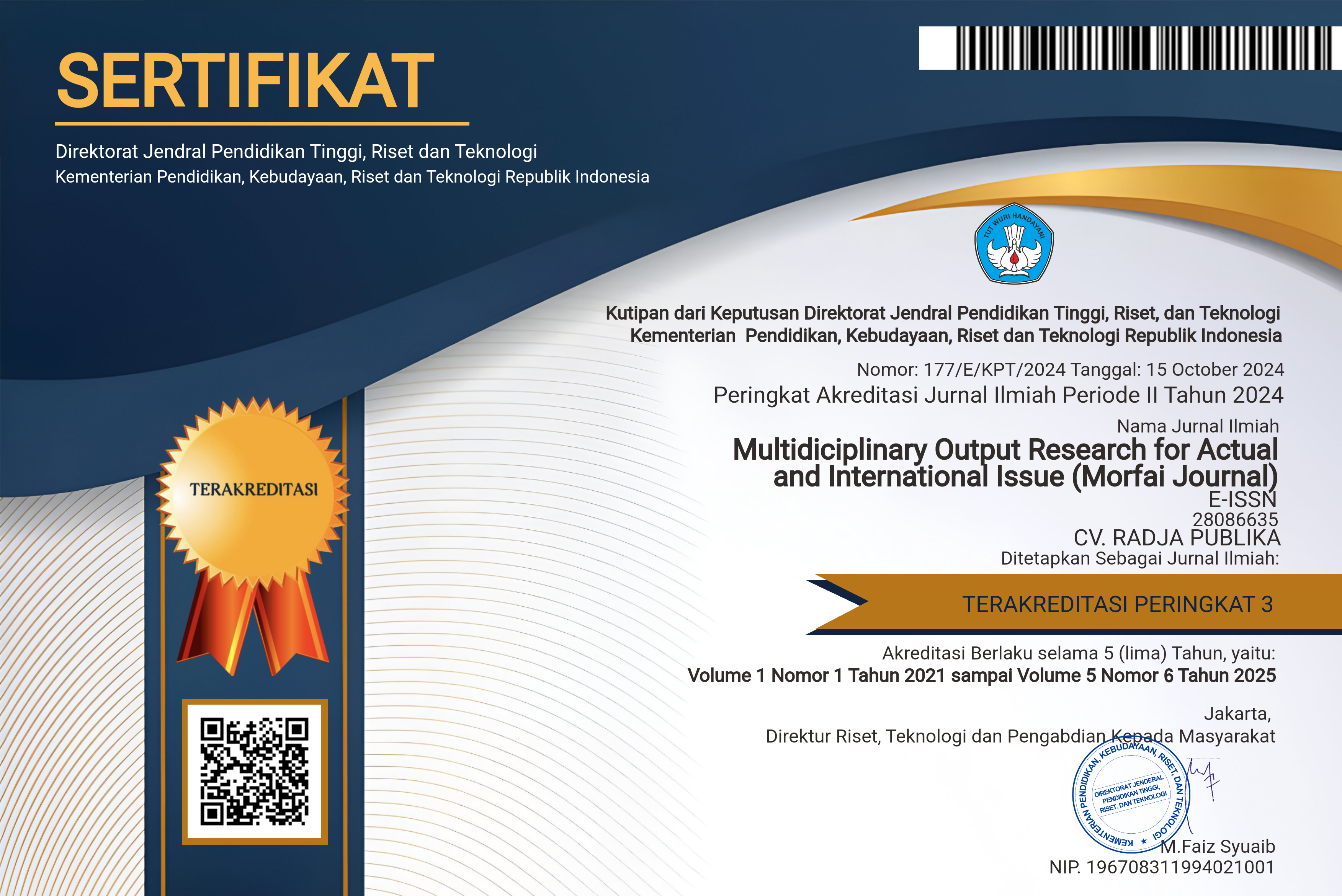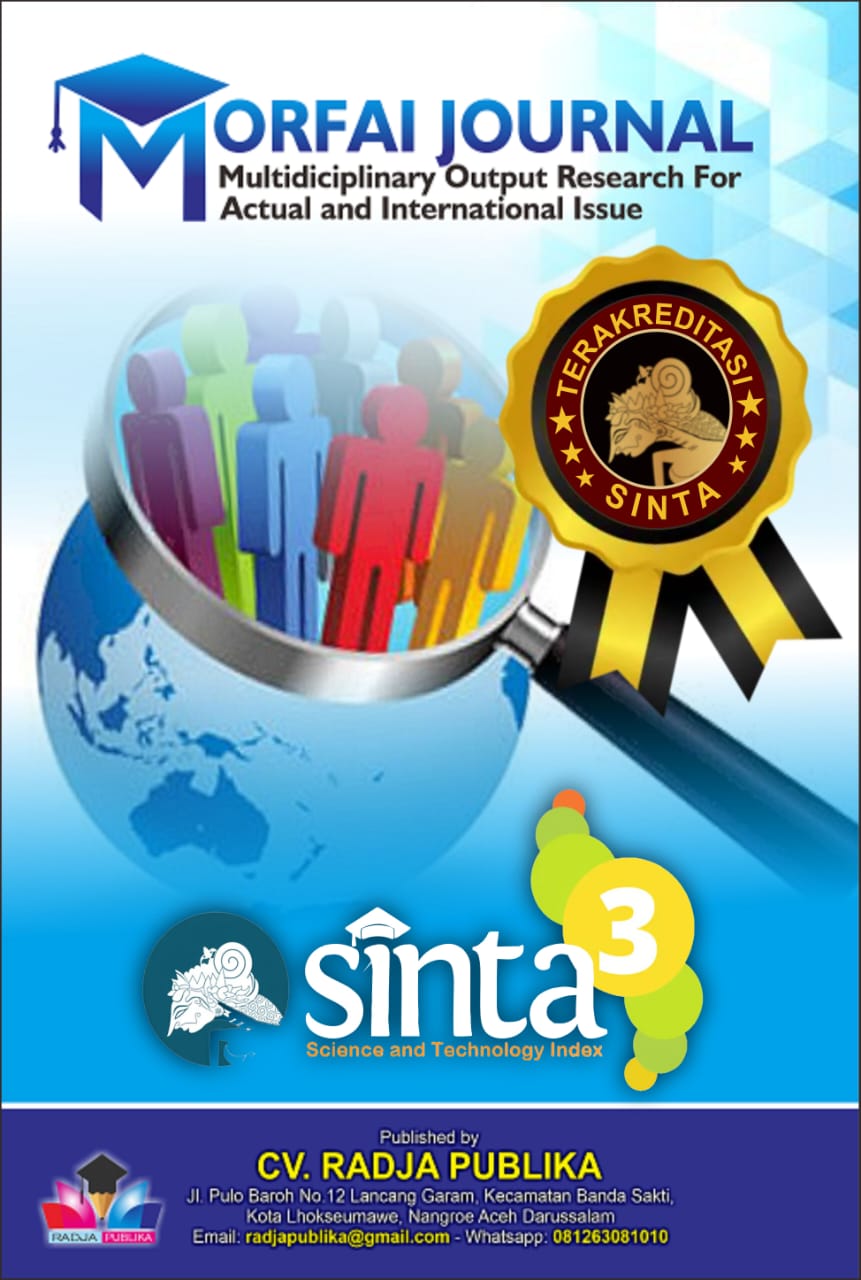DEVELOPMENT OF THE MOBILE CAP LEARNING MODEL IN HIGH SCHOOL FOR CIVICS SUBJECT
Main Article Content
Khairil Anwar Uzir
Sahat Siagian
R. Mursid
Abstract: The purpose of this study is to (1) find out the Mobile CAP learning model is suitable for use in Civics Subject learning, (2) find out the Mobile CAP learning model is practically used in Civics Subject learning, (3) find out that the Mobile CAP model is effective in Civics Subject learning in Class X of Pematangsiantar City High School. The development procedure of the Mobile CAP model refers to the Plomp development model accompanied by several modifications by paying attention to the R&D research steps consisting of the initial investigation phase, the design phase, the realization phase, the testing phase, evaluation, and revision. The location of the development trial is SMA Negeri 6 Pematangsiantar. The results of the study, namely the assessment or feasibility measurement carried out by experts on the learning model and supporting device products in the form of learning models, model books, teacher manuals, student manuals, Mobile CAP media, and the evaluation of learning outcomes as a whole are valid/feasible to be used for Civics Subject learning to students. The results of the practicality test through observation of teacher and student activities during learning, one-on-one trials, limited group trials, and field trials conducted on teachers and students prove that the entire product developed is very practical to use for Civics Subject learning for students. The results of the product effectiveness test through student learning outcomes obtained an N-Gain price with a high category which means that the product developed is effectively used in the implementation of Civics Subject learning for students.
Alhajri, R. (2016). Prospects and Challenges of Mobile Learning Implementation: A Case Study. Journal of Information Technology & Software Engineering, 06(05).
Ally, M. (2009). Mobile Learning: transforming the delivery of education and training. Quebec: AU Press
Amir, M. Taufiq. (2009). Educational Innovation Through Problem Based Learning. Jakarta: Kencana Prenada Media Group
Arends, Richard. (2008). Learning to Teach. Translators: Helly Prajitno and Sri Mulyani. New York: McGraw Hill Company
Arikunto, S., (2008). Classroom Action Research, Bumi Aksara Publisher, Jakarta.
Azra, H. and Hidayat. (2010). Civic Education. Jakarta: Prenada Media Group
Balaji N and R.Buvaneswari. (2013). Advance Mobile Learning Education System
Bicknell Holmes, T. and Hoffman, P. S. (2000). Elicit, engage, experience, explore: Discovery learning in library instruction. Reference Services Review, 28(4): 313-322.
Bound David. (1999). The Challenge of Problem Based Learning: Kogan Page. London.Striling USA
Branson, M.S. (1999). Making the Case for Civic Education: Where We Stand at the End of the 20th Century.Washingthon: CCE
Buchori, Alma. (2008). Professional Teachers Master Methods and Teaching Skills. Bandung: Alphabet
Bunyamin Maftuh. (2008). Internalization of Pancasila Values and Nationalism Through Civic Education. Journal of Educationist (Vol. II Number 2).
Borg and Gall, (2007), Educational Research, New York. Pearson Educational, Inc.
Cholisin (2000). IKN – PKN. Jakarta: Open University
Dewey, J. (1997). Democracy and education. New York: Simon and Schuster. (Original work published 1916) Piaget, J. (1954). Construction of reality in the child. New York: Basic Books.
Dick, W. and Carey. (2005). The Systematic Design of Instrution. 4 th. Harper Collins
Dimyati, Mudjiono. (2008). Learning and Learning, Jakarta: Rineka Cipta.
Gardner. (2007). The Condition of Learning and Theory of Instruction. Fourth Edition. New York: Holt. Rine Hart and Winston.
Gezgin, D. M. (2019). The effect of mobile learning approach on university students' academic success for database management systems course. International Journal of Distance Education Technologies, 17(1), 15–30.
Hashemi, M., Azizinezhad, M., Najafi, V., & Nesari, A. J. (2011). What is mobile learning? Challenges and capabilities. Social and Behavioral Sciences, 30, 2477–2481.
Jacobsen, David A, et al., (2009), Method for Teaching, Yogyakarta: Pustaka Siswa
Joyce, Bruce & Marsha Weil. (2009).Models of Teaching, New York: Prentice-Hall, Inc.
Joyce. B and weil.M. (2011). Model of Teaching, Foreword by James Worlfsixth Edition America.
Ministry of Education and Culture. (2014). Teacher Training Materials for Curriculum Implementation 2013 Academic Year 2014/2015. Jakarta: BPSDMP and PMP.
Keskin, N. Ö., Yamamoto, G. T., & Traxler, J. (2012). A multiplatform M-Learning System For More.
Kilpatrick, William Heard. (1951). Philosophy of Education. New York: The Nacmillan Company.
Klimova, B., & Poulova, P. (2016). Mobile learning in higher education. Advanced Science Letters, 22 (5–6), 1111–1114. https:// doi.org/ 10.1166/ asl.2016.6673
Kneller, George F. (2000). Foundations of Education. New York: John Willey & Son Inc.
Langeveld. (2007). Ecucational Reseatch: The Importance And Effects Of Institutional Spaces, , Spinger Doorcirecht Heidelberg, New York London
Lukman.S, Nurdiaman, Salikun. (2017). Civic Education: Center for Curriculum and Books, IAARD, Ministry of Education. Jakarta
Lu 'mu. (2017). Learning media of applications design based android mobile smartphone. International Journal of Applied Engineering Research ISSN, 12(17), 973–4562.
Mergendoller, Maxwell, & Bellissimo. (2006). "The Effectiveness of ProblemBased Intruction: A Comparative Study of Intructional Methods and Student Characteristics". Interdisciplinary Journal of Problem-Based Learning, 1(2): 49-69.
Mulyasa, (2011). Character Education Management, Jakarta: PT Bumi Aksara
Mulyasa, (2013), Development and implementation of curriculum thinking. Rosdakarya Bandung.
Nurdyansyah, N., Rais, P., & Aini, Q. (2017). The Role of Education Technology in Mathematics of Third Grade Students in MI Ma'arif Pademonegoro Sukodono. Madrosatuna: Journal of Islamic Elementary School, 1(1), November 2017, 37-46 ISSN 2579.
Ortiz, S., & Green, M. (2019). Trends and patterns of mobile learning: A study of mobile Learning Management System access. Turkish Online Journal of Distance Education, 20(1), 161–176.
Pidarta Made, (2007). The Foundations of Education. Jakarta: Rineka Cipta.
Prawiradilaga, Dewi Salma. (2012). Educational Technology Insights. Jakarta: Prenada Media
Rasmussen L. Karen Shivers, Davidson, (2006). V, Gayle & Web Based : Design, Implementation, and Evaluation. New Jersey: Pearson Education.
Russian. (2010). Learning Models to Develop Teacher Professionalism. Jakarta: Rajawali Press
Rusmono. (2012). Learning strategies with Problem Based Learning are necessary. Bogor: Ghalia Indonesia
Sumantri, Numan. (2001). Social Studies Education Reform. Bandung : Rosda Karya.
Sumartini. (2018). Pancasila and Citizenship Education: A Teacher's Book. Jakarta: Ministry of Education and Culture.
Samsuri. (2011). Citizen Character Education, Yogyakarta: Diandra Pustaka Indonesia.
Sapriya (2005), Civic Education Learning, Directorate of Islamic Education, Ministry of Religion, Jakarta.
Sugiyono. (2010). Educational Research Methods of Quantitative, Qualitative, and R&D Approaches. Bandung. Alphabet.
Tirtarahardja, Umar & La Sulo. (2005). Introduction to Education. PT Rineka Cipta. Jakarta.
Trianto. (2009). Constructivist-Oriented Innovative Learning Models, Prestasi Pustaka Publisher, Jakarta.
One, Hamzah B. (2006). A New Orientation in Developmental Psychology. Copyright © 2019 Copyright © 2019 Copyright �
Veerman, K. (2003). Intelligent Support for Discovery Learning. Twente: Twente University Press.
Zubaedi, (2011). Conceptual Character Educational Design and Its Application in Educational Institutions , Jakarta: Kencana









